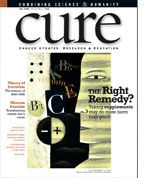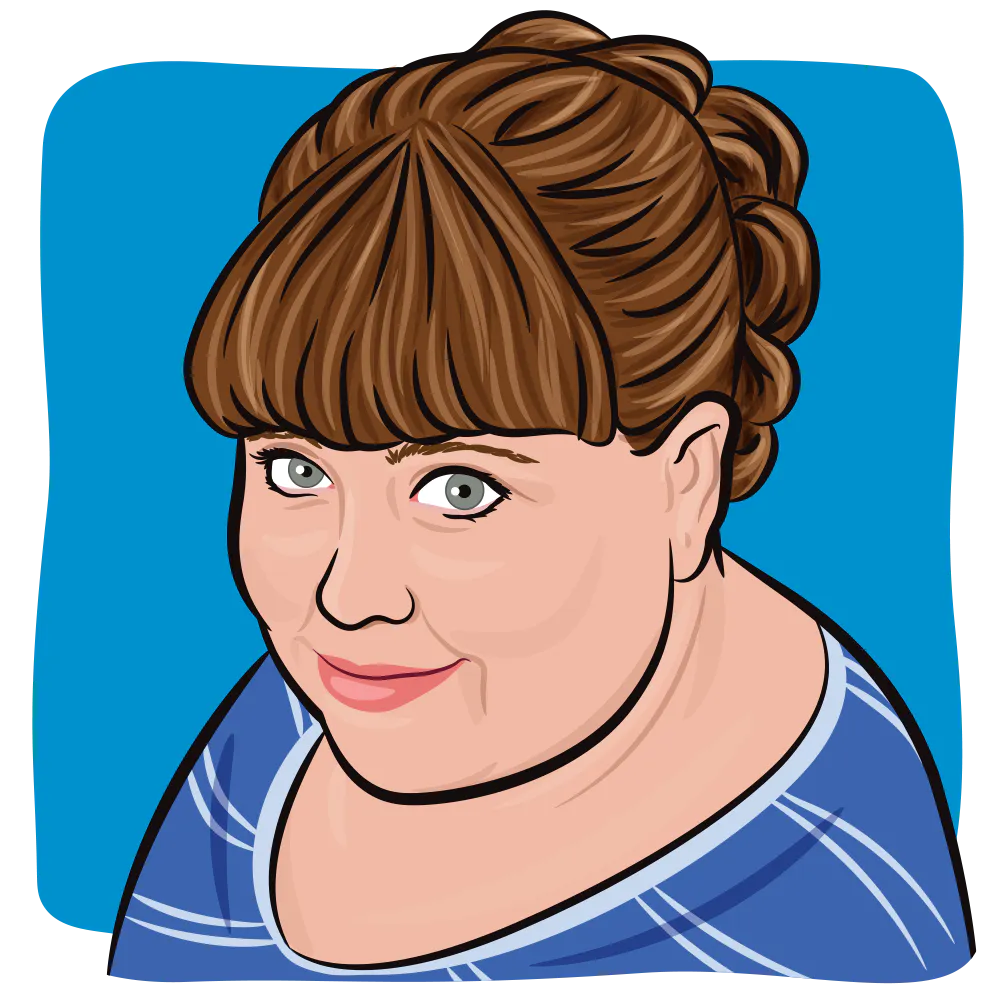Publication
Article
CURE
Advocates Make Cancer Their Mission
Author(s):
No rest for advocates who’ve made cancer their mission.
Thirty-one years after Susan G. Komen died from breast cancer at age 36, her sister, Nancy Brinker, is still full of righteous indignation. “I’m angry she didn’t know enough about breast cancer, that there were only eight or nine drugs to treat breast cancer at that time,” she says. “You know what? If you don’t get angry, you can’t do this work.”
The work she speaks of is the seemingly endless job of bringing attention (and funding) to finding a cure for breast cancer. Brinker took her first steps as an activist after promising her dying sister she would change the way people talked about and treated the disease. The year was 1980—long before the days of email and social networking, when media outlets wouldn’t so much as utter the word “breast.” Undeterred, she began the foundation that is now called Susan G. Komen for the Cure. Four years later, Brinker became an even more determined advocate when she received a diagnosis of breast cancer.
Brinker joined other early activists at a time when the word advocate wasn’t associated with cancer. To publicize their agenda, they drew lessons from the AIDS activists of the 1980s and from the civil rights and feminist movements as well. Using well-timed marches, letter-writing campaigns and media savvy, cancer advocates learned how to get noticed—and get their message heard. Today Susan G. Komen for the Cure has 123 affiliates, three of them international; has provided $610 million in research funding since its founding in 1982; and has granted $1.3 billion in community grants.
The activist path isn’t for everyone. Many survivors banish the word “cancer” from their day-to-day routine in an effort to put their experience behind them.
But many others embrace the “C” word through activism. “People think ‘There has to be a reason I went through hell,’” says Brad Zebrack, PhD, associate professor at the University of Michigan School of Social Work and a 25-year survivor of Hodgkin disease.
Not surprisingly, Zebrack, who was diagnosed at age 25, focuses his research on childhood cancer survivors and adult survivors of childhood cancer, and he now has a sizeable number of studies to his credit. His research is having an impact on the way children and young adults with cancer are treated today.
No one has counted all the cancer activists— certainly there are many tens of thousands. The scale of their involvement can be small: reminding someone of the value of a colonoscopy; running in a race to raise money and awareness; lending a sympathetic ear to a newly diagnosed friend. Then there are individuals who seek a bigger stage. Everyone recognizes the big names: Brinker around breast cancer and Lance Armstrong, whose testicular cancer diagnosis led to the ubiquitous yellow bracelets and a whole lot more in the arena of awareness, advocacy and support for survivors.
All these years later, Brinker says that she tries to keep her anger in check—and draws strength from “passion, love and hope.” She warns newcomers to activism: “Some days it’s three steps forward then two steps back.” For her, the reward is the improved survival rate for breast cancer patients and the knowledge that her army of pink-ribboned warriors is a force to be reckoned with.
A legislator weighing cuts to a breast cancer program “probably doesn’t want a lot of pink people showing up” to protest, Brinker says.
“Cancer patients are coming to a strange country,” says Judith May, who knows all too well how hard it is to journey to a new place. For 23 years she worked to resettle international refugees. In 1997, she was diagnosed with a rare and slow-growing strain of non-Hodgkin lymphoma called Waldenström macroglobulinemia. Like the refugees she has helped, she had a strong urge to connect with others like her.
As president of the International Waldenström Macroglobulinemia Foundation, May, working with the IWMF board of trustees, has overseen the expansion of the organization’s social network and services for 3,000 patients, as well as answered questions from the newly diagnosed and raised money for research.
With a rare cancer like this, nothing is going to happen unless that group of patients gets organized and makes it happen.
When cancer kicked Jonny Imerman at 26, he kicked back—founding Imerman Angels, an organization that pairs newly diagnosed patients with volunteer mentors roughly the same age and facing the same cancer. The age factor is particularly important for the Michigan native, who faced testicular cancer in 2001 and then again two years later. As he sat in a cancer clinic full of older patients, he thought, “I wish I knew someone like me.” He prayed: “If I make it through all this, I will find a way to give back.” He pulled through—and didn’t forget his pledge. Imerman Angels now has a database of 4,000 mentors and made 1,500 connections last year.
Like Nancy Brinker, Lisa and Mac Tichenor of Dallas found motivation in the loss of a loved one. In 2003, their 16-year-old son Willie was diagnosed with osteosarcoma. Three years, 32 chemo treatments, 11 surgeries, three lung collapses, 10 blood transfusions and 16 hospital stays later, the doctors ran out of treatment options. Before his death, the Tichenors spoke to their son about how he wanted to be remembered. Willie identified three goals: research on treatments for his cancer, college scholarships and scholarships for church mission trips to aid the poor. His parents established What Would Willie Want (The QuadW Foundation), granting about $500,000 a year from an endowment created by the sale of the family radio business.
Asked if this group has helped heal the pain of losing a child, Lisa Tichenor says, “I’m not sure I even know what healing is.” But she does feel she’s benefited from The QuadW Foundation. “This board of [mainly] Willie’s friends keeps a piece of Willie close to us.”
Mac Tichenor adds, “It’s a healthier way to deal with the emotional energy than to shut it out.”
That number is always growing. Imerman recently matched Chicagoans Benji Salter and Ben Settler. In 2007, at age 26, Salter was diagnosed with Hodgkin lymphoma. After treatment, he became an Angel.
“It’s therapeutic for the person who is the fighter and for the person who is the survivor,” Salter says. Sure, the memories can be “horrendous,” but using them to help others is “a total catharsis, a great feeling.”
Settler, who received his Hodgkin diagnosis in 2009, says talking with Salter was a big relief.
“Just seeing that life does get back to normal was helpful,” Settler says. So was learning that every irrational fear he had, Salter had had, too. “I didn’t cry in front of people much, tried not to let emotions out. I didn’t have to have that filter with Benji.”
Today, Settler, 26, is in good health. He’s signed on with Imerman’s group and raised money for the Leukemia and Lymphoma Society, where he’ll be an “honored hero” at his local chapter’s “Light the Night Walk.”
“Cancer made an enemy of me,” Settler says, sounding every bit like a budding activist.
In such a small group, members of the foundation are a key source of research dollars. Sometimes they are able to attract funds from pharmaceutical companies as well; however, she says, “with a rare cancer like this, nothing is going to happen unless that group of patients gets organized and makes it happen.”
Yet even a small group’s fundraising can have a tremendous impact. May points to a 2010 study funded by IWMF that uses genetic patterns to predict which patients might have a more aggressive form of the disease.
Young adults are also a rare cancer subgroup, and they are the focal point of Samantha Eisenstein Watson’s activism. Diagnosed with Ewing’s sarcoma in 1999 at the age of 21 and myelodysplastic syndrome in 2001, she realized how lucky she was to have help from her parents, family and friends—and how others in their 20s may be reeling from cancer-related bills. Since 2005, her SAMFund for Young Adult Survivors of Cancer has awarded $600,000 in grants to some 300 recipients, raised largely from individual donations.
“We hear from people about to be evicted who can’t afford the co-pay for prescription meds,” says Watson, now 33 and living in Massachusetts. “When I was in the middle of treatment and throwing up what felt like 100 times a day,” she says, “I never would have thought I would choose cancer as a career. Now I can’t imagine it any other way. I needed to do this because I needed to pay it forward.”





